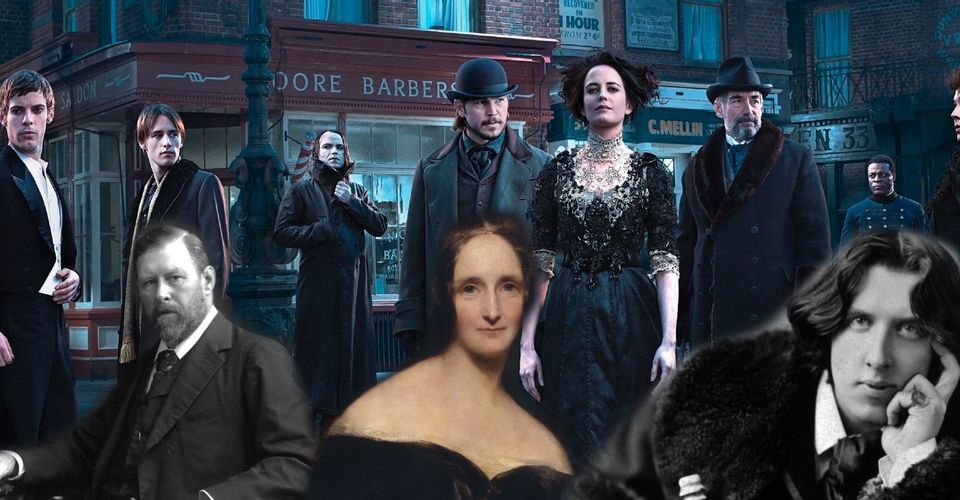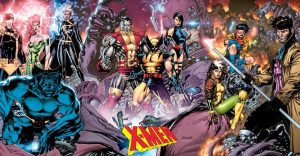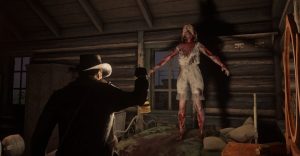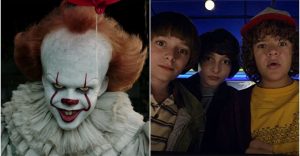Penny Dreadful: Every Book and Movie Reference Explained

John Logan’s horror drama television series Penny Dreadful features an abundance of literary references to classic novels from the 18th and 19th century as well as contemporary paranormal movies and creature features. The series ran from 2014 to 2016 and concluded after season 3. Throughout its entirety, Penny Dreadful introduced and adapted some of the genre’s most iconic stories and characters to craft a universe where all of these horrors exist at once. Here is every literary and movie reference in the series explained.
Penny Dreadful stars Timothy Dalton as Malcolm Murray whose tragic story sets up the entirety of season 1. As he and Vanessa Ives (Eva Green) battle vampiric monsters to rescue his daughter, they recruit Ethan Chandler (Josh Hartnett) and Victor Frankenstein (Harry Treadaway) to assist them. Despite their best efforts, they cannot save her. Season 2 focuses primarily on a coven of witches that attempt to entice Vanessa in joining them due to her ties with powerful demons. In season 3, the main cast reaches a climactic end after battling Dracula (Christian Camargo). While Penny Dreadful lives on in the new series Penny Dreadful: City Of Angels (2020-), it is based primarily in historical events rather than literature and film.
Character names make some of Penny Dreadful’s references obvious, especially when the characters based on horror icons are central to the plot. At the same time, there are an abundance of references that are not as obvious as Bram Stoker’s 1897 Dracula or Mary Shelley’s 1818 novel Frankenstein. These two are the main ones, but they are not alone in their importance and significance to the story of Penny Dreadful.
Bram Stoker’s Dracula

In 1897, Bram Stoker’s gothic horror novel Dracula was published for the first time in the United Kingdom. It details the titular character as he moves from the Romanian city of Transylvania to England all while battling Professor Van Helsing. The novel spawned numerous adaptations for television and film. In 1921, Dracula graced the screen for the first time in the Hungarian silent film, Dracula’s Death. Once the imagery of a vampiric being entered the mainstream in 1922 with Nosferatu, it set up the iconic count’s cinematic history for the next hundred years. In Penny Dreadful, Count Dracula did not appear directly until season 3 with Christian Camargo’s portrayal.
The series utilized Stoker’s character in order to create an even deeper story line for Vanessa Ives, who is perceived as Dracula’s ultimate soulmate. Ultimately, he transforms her into a vampire. Penny Dreadful’s Dracula has a near identical personality to the original creature, with charisma and beauty that entices women to abide by his desires. Dracula brings the series to a close when London becomes infested with vampires and the original Penny Dreadful crew bans together to bring down his reign of terror. The series introduced the iconic character last in order to wrap up Timothy Dalton’s need to bring down the vampiric creatures that tormented his daughter in season 1.
Mary Shelley’s Frankenstein

From the very beginning of the series, Penny Dreadful introduced Dr. Victor Frankenstein as a main cast member. This character was taken from one of history’s most influential gothic horror novels: Frankenstein (1818) by Mary Shelley. The novel follows Dr. Frankenstein as he reanimates a corpse, who is from then on known as “Frankenstein’s Monster”. What ensues is the doctor faltering in his attempts to control what he has created, showing a distinct departure from Romantic-era literary elements into the realm of Gothic literature. In Penny Dreadful, Dr. Frankenstein reanimates three corpses. The first is a creature who goes by the name Caliban or John Clare, the second is Proteus, who is killed by the original, and the third is the bride, known as Lily Frankenstein.
While the classic story of Frankenstein is presented through the doctor and his creation, the series took influence from its depiction in popular culture, such as Boris Karloff’s sequels. In the case of Lily Frankenstein, she is not present in Shelley’s novel as the proposed bride of the creature. Her character is based on the 1935 movie Bride Of Frankenstein. Penny Dreadful utilizes an array of aspects that involve the story of Dr. Frankenstein which strengthen the torment he experiences, the loneliness he feels, and his selfish need to control his environment. Ultimately, the creatures created by Dr. Frankenstein in Penny Dreadful are implemented in order to outline his character arc that ends with his transformation into a selfless person.
Other Literary References

The literary references in Penny Dreadful are plentiful. For instance, William Shakespeare is quoted and referenced throughout the series’s entirety. Furthermore, season 3 begins with death of British poet Alfred, Lord Tennyson who famously wrote “Ulysses” in 1833. Characters are known to quote William Wordsworth’s 1815 poem “Ode: Intimations Of Immortality” and John Keats’s 1819 poem “Ode To A Nightingale” in order to establish the Romantic era’s influence on the gothic landscape that they navigate. Keats and Wordsworth were two of the most famous Romantic poets, by quoting them, it sets the tone for relationships between characters and their inner most thoughts.
Along with quotes taken directly from famous works, Penny Dreadful includes Oscar Wilde’s titular character from the 1890 novel The Picture Of Dorian Gray about a man whose beauty entrances everyone he comes in contact with. His looks never fade due to a portrait that keeps him youthful. Just like Reeve Carney’s Dorian Gray, the character lives debaucherously as a man who indulges in sex, alcohol, and the libertine lifestyle. During season 3, he recruits a young woman named Justine who is actually based on the Marquis de Sade’s French libertine novel Justine, or The Misfortunes of Virtue (1791).
In both the novel and Penny Dreadful, Justine is forced into sadism to appease those around her. These two characters are meant to reflect the horrors and mystique of literature as opposed to romance. While Dr. Henry Jekyll was not utilized to his full potential in the show, Robert Louis Stevenson’s iconic novella “Strange Case of Dr Jekyll and Mr Hyde” (1886) is present in season 3.
Other Horror Movie References

While literature is the primary influence on Penny Dreadful, it includes references to popular elements of contemporary horror movies. For instance, Vanessa’s possession in season 2 reflects films such as The Exorcist (1973). Her torment with the devil within her becomes physical, and tears her apart from the inside out, just as Linda Blair’s Regan MacNeil experiences. Ultimately, Vanessa is successfully freed from the clutches of the entity when Ethan exorcises it from her body by killing her.
The character Ethan Chandler is also a reference to a classic, and one of the most iconic movie monsters in cinema history. In season 2, brief glimpses of his transformation into a werewolf are trickled throughout. By season 3, he is able to fully transform into a werewolf. Ethan’s real name—Ethan Lawrence Talbot—references the Universal classic movie, The Wolfman (1941). His character could also serve as a reference to An American Werewolf In London (1981). This is because Ethan is American and he is living in London when he initially begins to transform into a werewolf. He is—quite literally—an American werewolf in the city of London.
Throughout the series, there are countless references to well known novels and films as well as lesser known works that showcases John Logan’s impeccable attention to detail. Penny Dreadful is an amalgamation of every major element of literary and cinematic horror throughout history.
About The Author

















